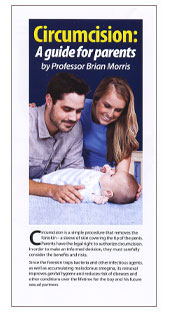Chlamydia in Women
Women whose male partner is uncircumcised have been found to exhibit a 5.6-fold increased risk of infection with Chlamydia trachomatis than women whose partner was circumcised [Castellsague et al., 2005]. Thus in this large multi-nation study circumcision reduced the risk 82%. Data were identical for women who had only ever had one sexual partner. The study involved 305 couples in 5 countries from different parts of the world. A prospective study of 5,925 women in Uganda, Zimbabwe and Thailand found no significant difference, however, in risk of Chlamydia or gonorrhoea [Turner et al., 2008].
In the study by Castellsague et al. a species of chlamydia that is not sexually-transmitted (C. pneumoniae) did not differ in frequency between each group, so supporting the biological plausibility of the effect. This study used a less optimal serological test for past Chlamydia infection, which reflects lifetime exposure rather than acute infection.
Chlamydia trachomatis is the second most frequent STI (HPV being the most common) and is the most common bacterial STI. The World Health Organization estimates there are 92 million new cases annually, with 3 million in the USA, where annual cost for care is $2 billion [Peipert, 2003]. In Australia, Chlamydia infections have more than tripled between 1999 and 2006, reaching record levels [Kang et al., 2006; Anonymous, 2007c].
Most cases are in the teenage to 24 year old age group, and are 2.5 times higher in females than males [Weaver, 2007]. The rise coincides with an increase in the proportion of uncircumcised males in this sexually active age group. Chlamydia trachomatis is responsible for pelvic inflammatory disease that causes infertility, ectopic pregnancy and pelvic pain. It is also a co-factor in HPV-induced cervical cancer and, in both sexes, HIV transmission. In men, just as in women, it can cause infertility, as well as prostatitis and urethral blockage.
It was suggested that the reason for the link may be that the prepuce likely traps infected cervicovaginal secretions for a longer period, so increasing risk of penile urethral infection and transmission to the vagina during sex [Castellsague et al., 2005]. But data on Chlamydia is by no means conclusive as yet, and further studies are warranted.
For more, see systematic reviews [Grund et al., 2017; Morris et al., 2019b].



